“There’s no such thing as bad weather, only unsuitable clothing.”
Of course, these are the words of iconic author Alfred Wainwright, first penned in his 1973 book Coast to Coast. But given the advances in clothing performance, they’re arguably even more relevant today—and they’re certainly relevant when it comes to golf.
Best golf waterproofs guide
Gone are the days when it was 50-50 whether your ‘waterproof shoes’ would actually keep your feet dry on a wet day, and when the guarantee of a suit repelling rain came with the downside of you feeling like you were in a sauna—or worse, a bin bag.
Now, there are no excuses for not staying dry when it’s wet out on the course. In this article, you’ll find a round-up of the best golf waterproofs on the market and what makes them so.
Best golf waterproofs: table of contents
Best waterproof golf jackets
Best waterproof golf trousers
Best waterproof golf shoes
Best waterproof golf gloves
Best waterproof golf cap
Best waterproof golf bag
Best waterproof golf jackets
Galvin Green Albert
RRP £369
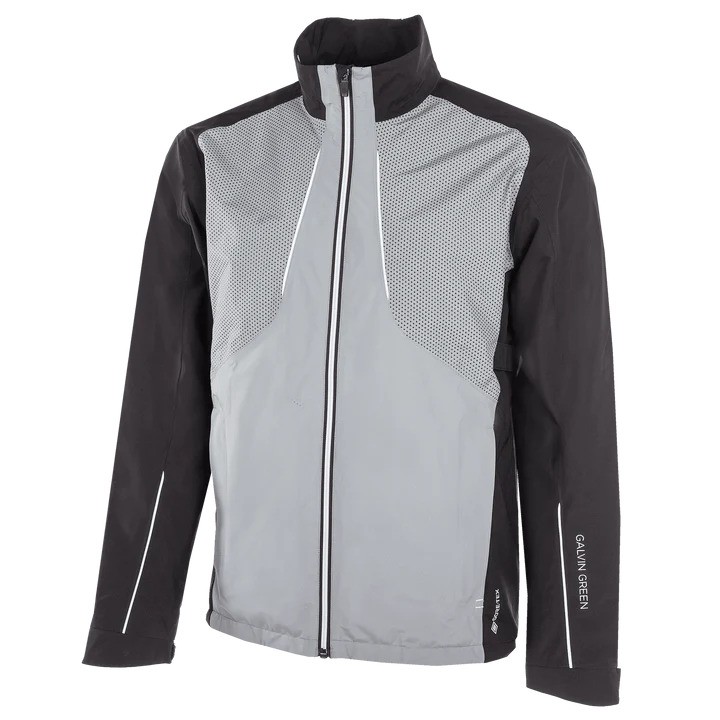
There’s only one place to start: the King of waterproofs—Galvin Green.
GG’s use of Gore-Tex is the key to its genius gear. In terms laymen can understand, the tiny pores in the Gore-Tex are too small to let raindrops in but big enough to let sweat out. So you stay dry but don’t get the classic sauna experience.
Galvin Green’s gear is also always super-lightweight and super-functional, too. The Albert has a full zip, which is handy when you’re trying to put it on or take it off quickly, plus Velcro straps on the side of the chest to allow you to tighten or loosen it.
The stretch Gore-Tex fabric gives full freedom of movement, and the lightweight mesh lining allows for a pocket of air between the body and the jacket to maintain body heat on cold days.
It’s machine washable and comes in sizes S-XXL with three modern designs.
Best cheap waterproof golf jacket
Callaway Stormlite
RRP £100
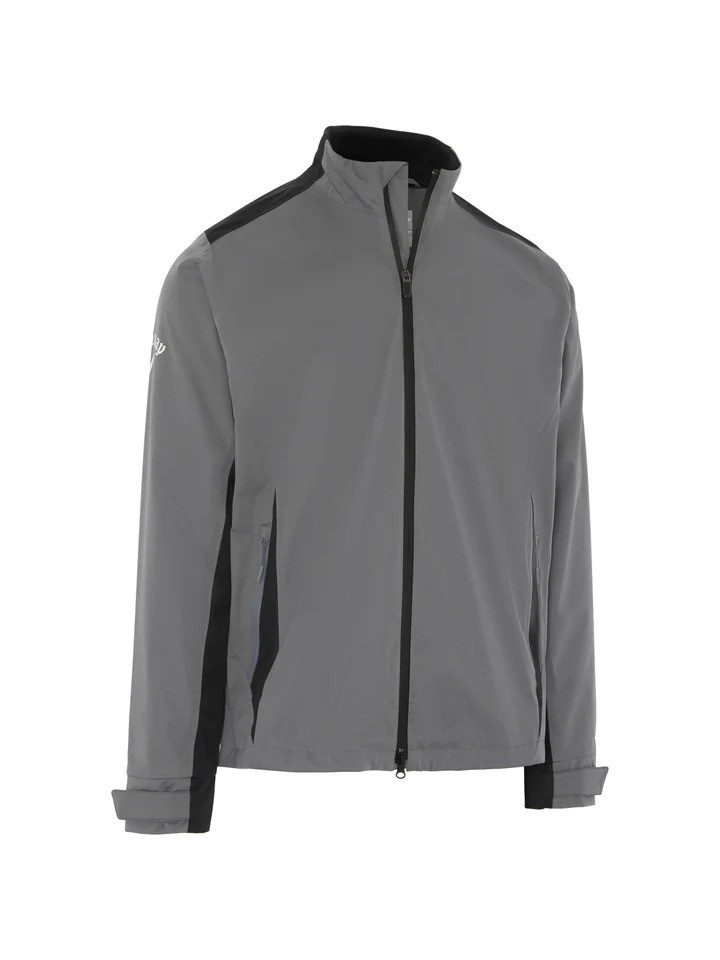
Part of Callaway’s Weather Series™, the Stormlite is made from 100% polyester and waterproof to 10,000mm. It boasts adjustable cuffs for neatness and is a good-looking jacket with contrast detailing on both colour options, with the Callaway Tour logo on the right sleeve.
It’s available in caviar (black) and quiet shade (grey) from sizes S-XXL and is also machine washable.
Best waterproof golf trousers
FootJoy HydroTour
RRP £179
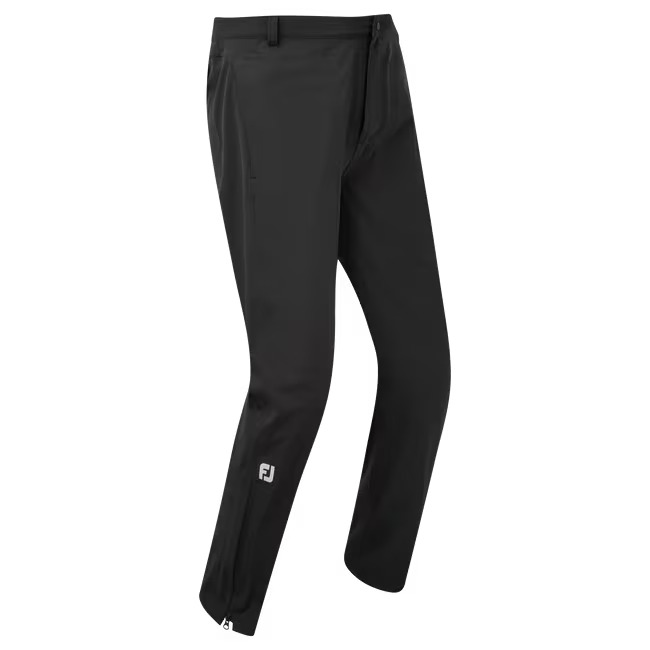
What FootJoy doesn’t know about fighting the elements is probably not worth knowing anyway, and these lightweight, stretchy trousers with superb waterproof protection are another winner.
And here’s their USP: they can either be worn over another pair of trousers or just on their own, with a belt loop to ensure they fit properly.
The super-lightweight material on these trousers means you’ll never even think of taking them out of your bag—they’re super handy for those ‘just in case’ days.
They can handle 20,000mm of water column pressure (that’s a lot) and even have a three-year waterproof warranty.
Best super-premium waterproof golf trousers
Galvin Green Andy
RRP £229
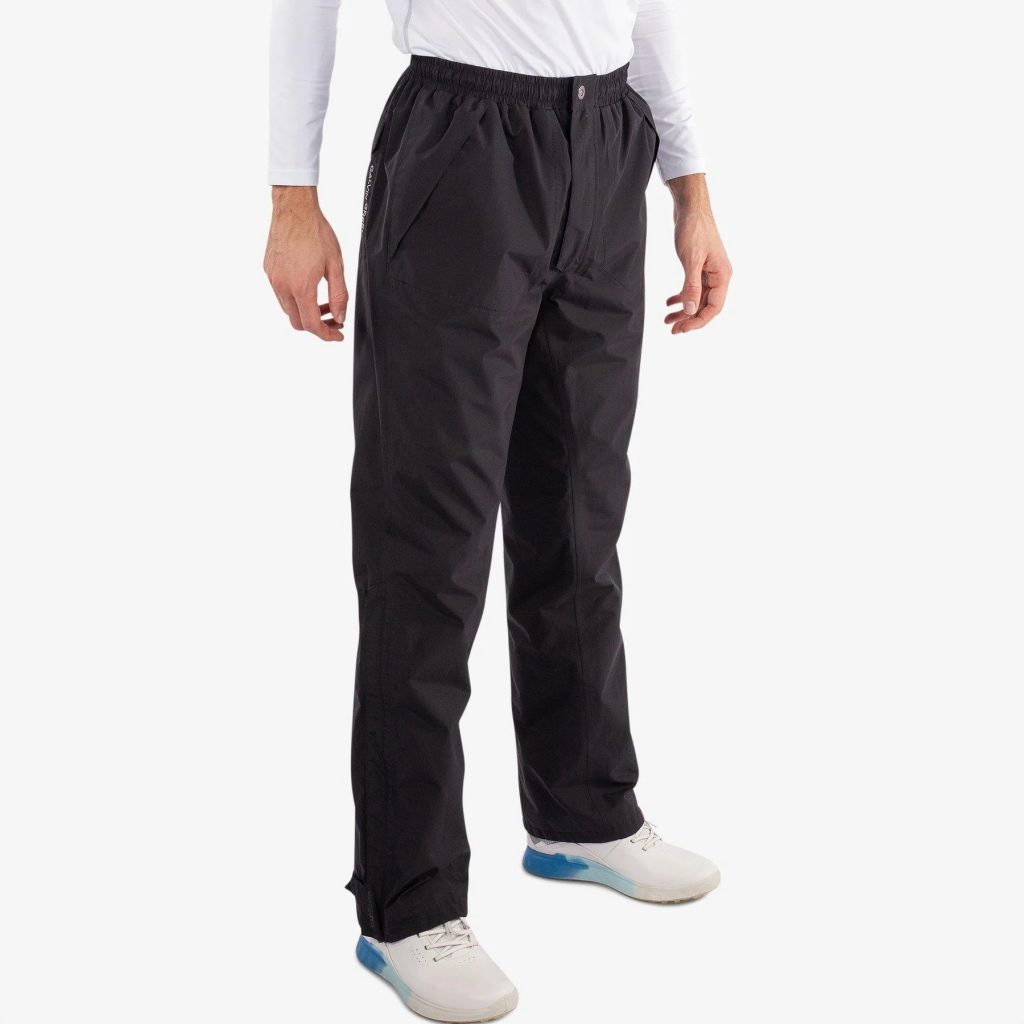
For the ultimate performance, pair your Galvin Green Albert jacket with the Andy, the Swedish company’s top-selling pair of trousers.
It’s part of the DRYVR™ rain gear collection, and, yes, you’ve guessed it, it’s also lined with that magical Gore-Tex material.
As well as being completely waterproof yet breathable, it’s also windproof, so they’re great to have on dry but breezy days, too.
The elastic waist and drawstring add to their comfort and functionality—and getting them on quickly when rain arrives unexpectedly!
Related: The best waterproof golf trousers
Best waterproof golf shoes
Ecco Biom G5
RRP £220
The Danish shoe company’s move into golf was a huge success, and the Biom G5s are the latest smash hit. Their comfort and performance levels lead the market.
The G5 has the look of the Biom family with the performance of a premium leather upper combined with a Gore-Tex membrane that makes them breathable and 100% waterproof.
Ecco’s own tanneries produce the leather for the shoes, but it’s the combination with Gore-Tex (AKA the kryptonite to rain) that makes it so exceptionally good in all weather.
It goes without saying, but these golf shoes are extremely comfortable and offer good support through the swing—Ecco shoes always do. The soles also provide sufficient traction, even on those slippery, wet days.
There is also a BOA option, a laceless system for closing the shoe around your foot.
Best cheap waterproof golf shoes
Puma Ignite Elevate
RRP £130

The sporty-looking Ignite range has a waterproof Exoshell upper that keeps the elements out while providing the feel of a mesh shoe. Plus, a seven-cleat traction pattern provides 72 points of grip while still maintaining the outlook of a traditional spike shape.
The durable yet lightweight Exoshell is reinforced with underlays to keep the foot in place no matter how hard you swing. The Ignite Foam midsole is also very comfortable and provides plenty of support during a round.
Related: The best waterproof golf shoes
Best waterproof golf gloves
MacWet Aquatic Micromesh
RRP £24.99
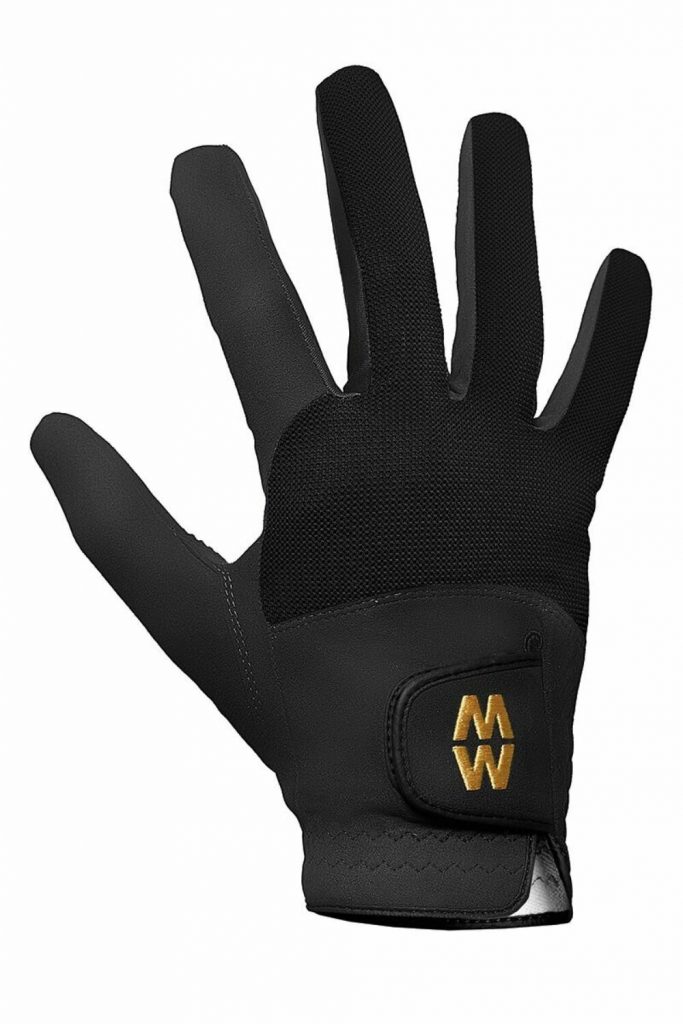
‘All grip, no slip’ is MacWet’s motto, and we like them a lot.
The technology in the gloves’ material impressively responds to changes in the climate, ensuring maximum grip and feel no matter how wet or humid it is. They use natural ‘wicking’ properties so water is readily transported along, around, and over the gloves’ surface to the fabric face, where it quickly evaporates.
There are an impressive choice of sizes, from XS (6.5cm across your four finger knuckles) to XXL (10.5cm).
Best-looking waterproof golf gloves
Under Armour Storm
RRP £11
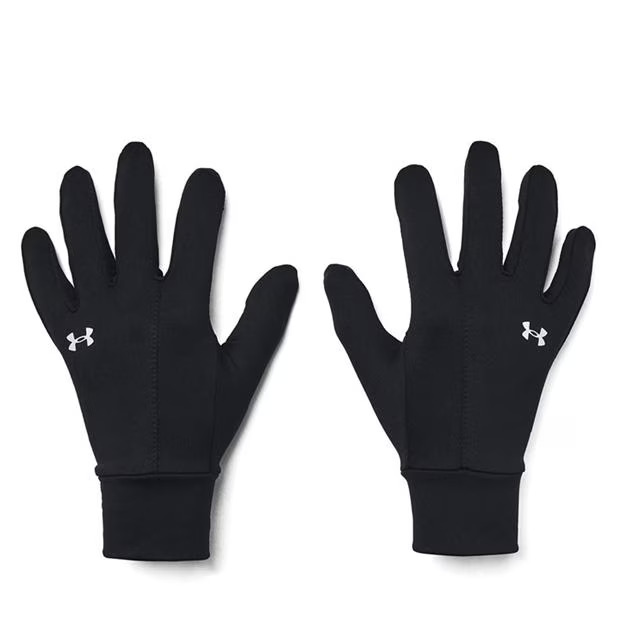
If you want to really look the part even when it’s raining, the Under Armour Storm is your option.
Its tech repels the rain but looks cool, and also keeps you feeling cool because there’s no pay-off in terms of breathability. It’s durable and flexible with good grip, too.
Best waterproof golf cap
Galvin Green Argo cap
RRP £39
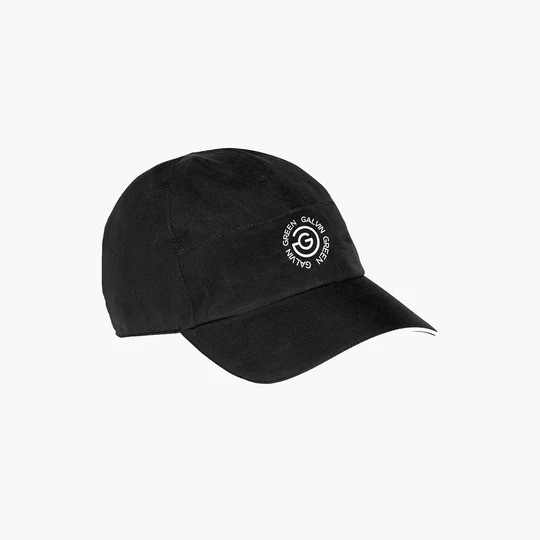
Yes, this really is a thing. A waterproof cap. We couldn’t do a round-up of the best golf waterproofs without one—and next time there’s a storm, you’ll be glad you bought one.
The Argo is a full seam-sealed Gore-Tex cap that’s completely waterproof and windproof. It is, naturally, breathable and has an elasticated sweatband for extra comfort. It can be adjusted from 54 to 62cm and comes in three colours—black, navy blue and grey.
Oh, and if you want to be even more protected, try the Annie, which is the Argo cap with the addition of a warm lining and ear flaps that extend all the way around the back of your neck. So, possibly not the most stylish look ever, but you’re never getting rain down your back with this on your head.
Designed for those who often play in the rain and cold, the Annie is a tenner more than the Argo at £49.
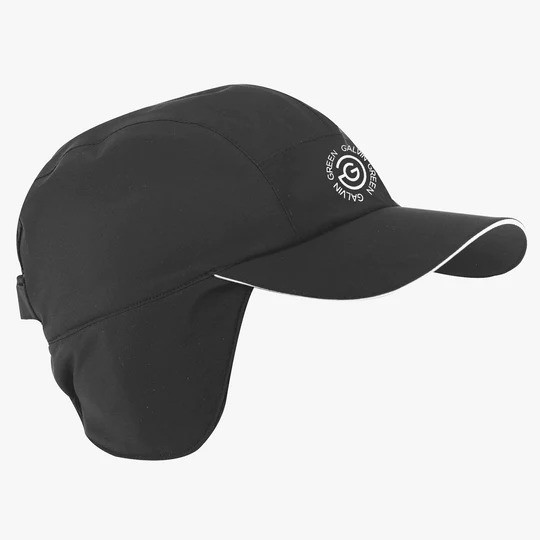
Best waterproof golf bag
Motocaddy HydroFlex Stand
RRP £219

The team at Motocaddy are golf trolley and bag specialists, and the HydroFlex is a diamond in their range.
It has a waterproof rain hood, a towel and accessory hook, plus an internal umbrella sleeve, which add to its waterproofness and keep you and your gear dry even in a downpour—yet it still manages to remain pretty lightweight at just 2.4kg.
Key features of this bag include five full-length dividers, an external drinks pouch and five spacious pockets with top-of-the-range YKK zips for easy access even with wet and cold hands.
It’s a stand bag but it also fits perfectly onto any Motocaddy trolley. It boasts a quick-release strap and adjustable rear stand lock. It comes in a stylish grey colour with red, blue or yellow trim.











